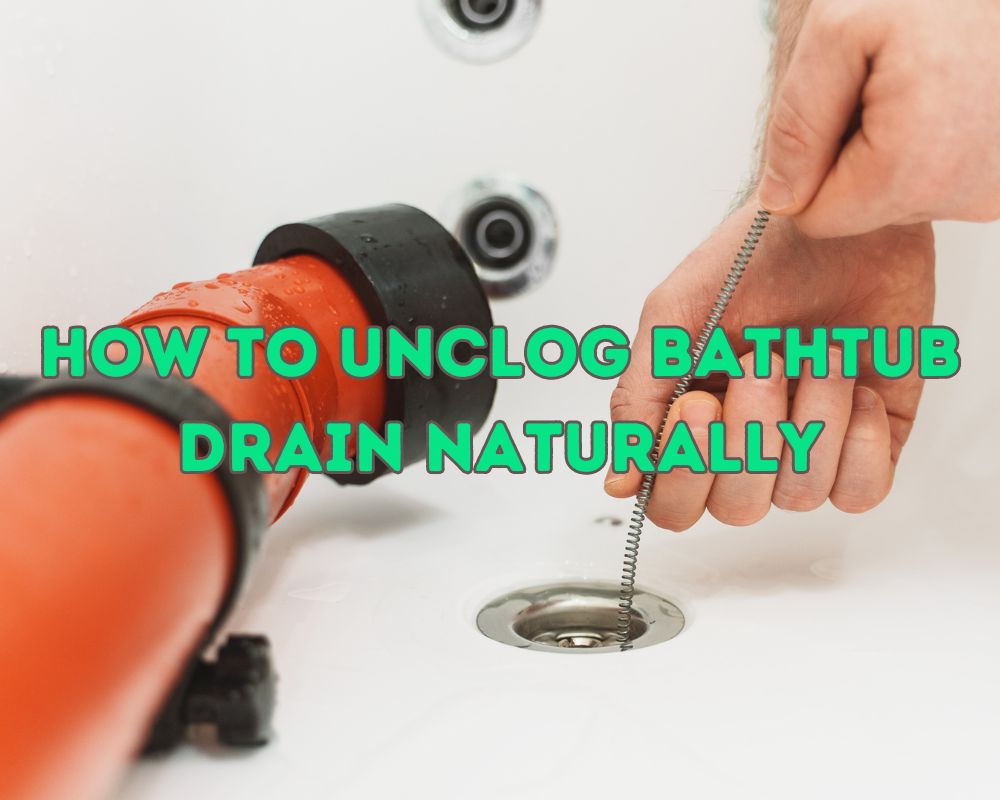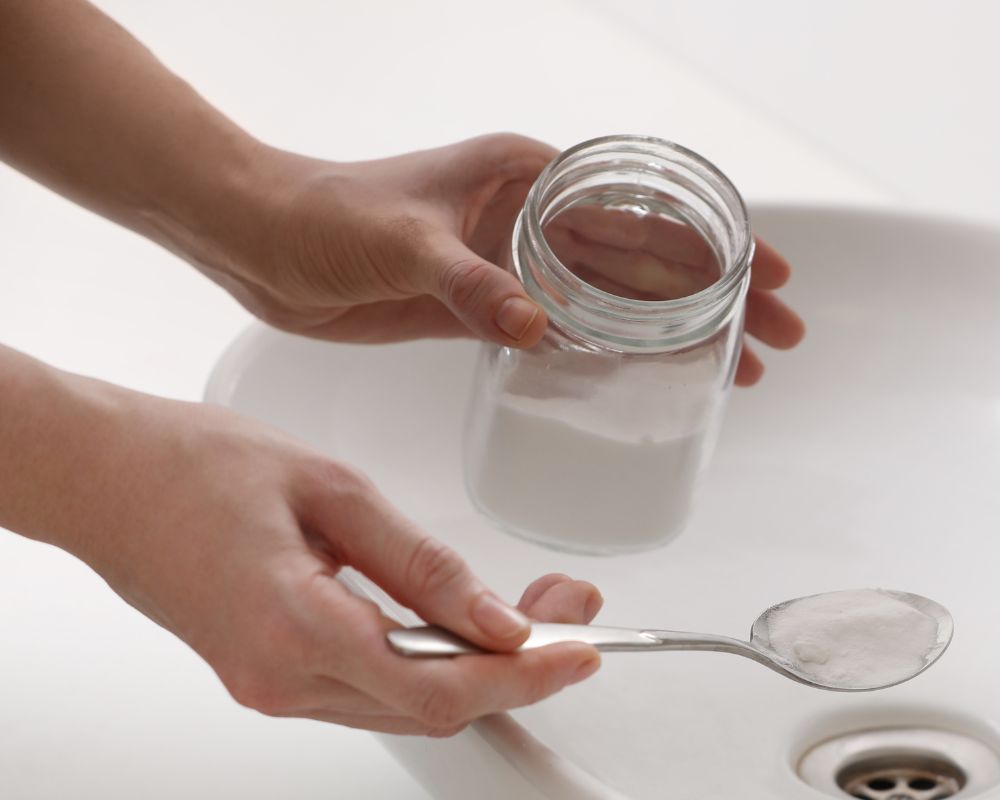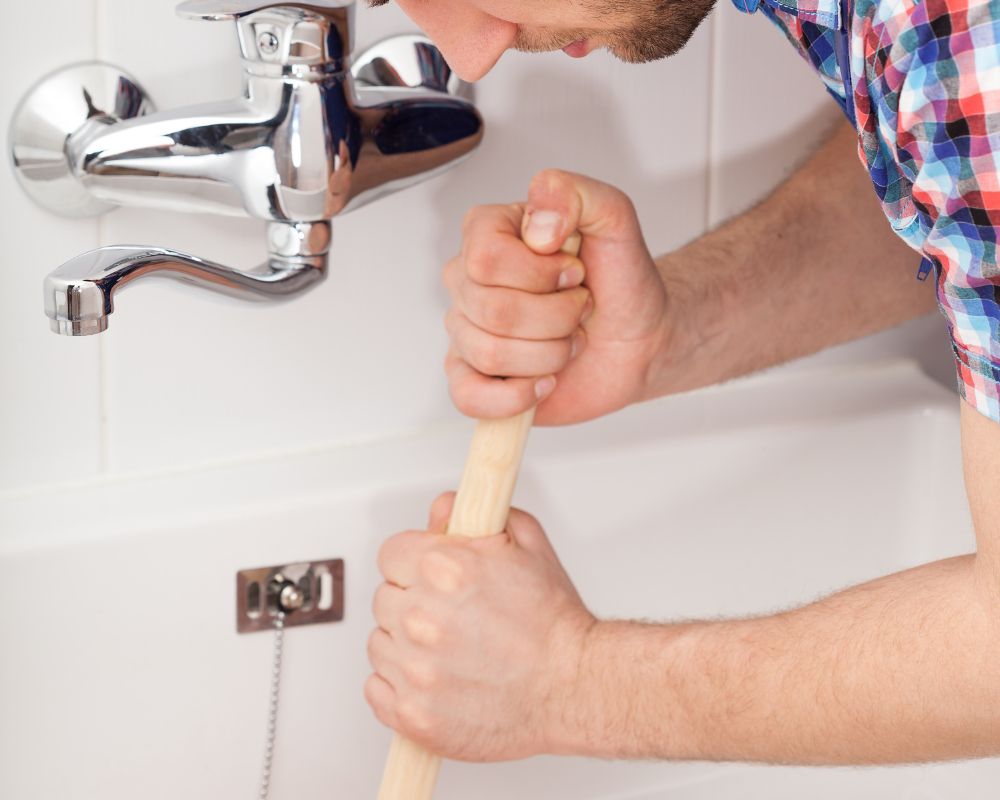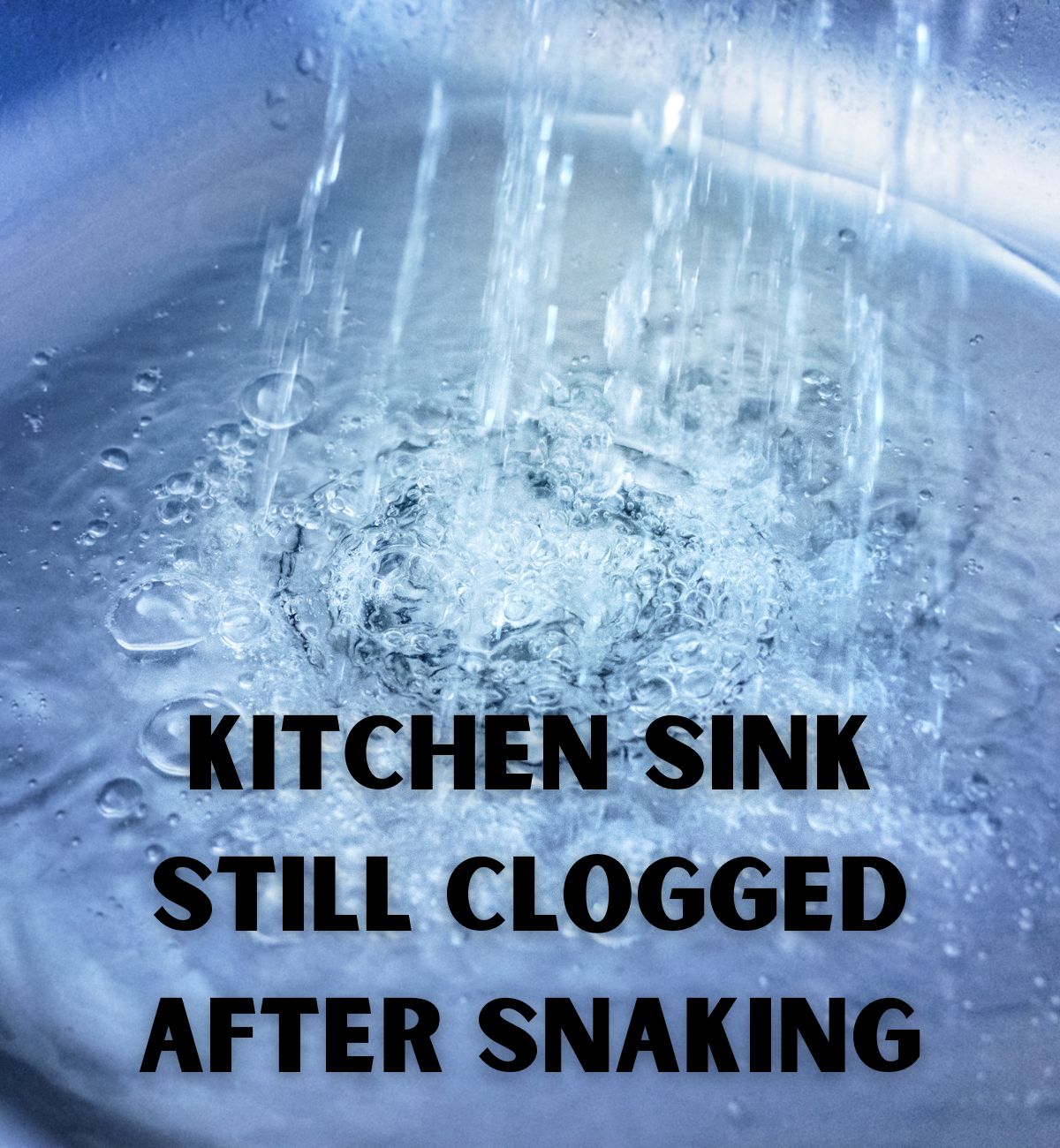Learn How to Unclog Bathtub Drain Naturally at Home

How to unclog bathtub drain naturally. Are you tired of dealing with a slow-draining bathtub? Clogged drains can be frustrating and inconvenient, but before you reach for harsh chemicals, consider using natural remedies to unclog your bathtub drain.
In this section, we’ll guide you through easy and effective methods to unclog your bathtub drain naturally without the need for harmful chemicals. By the end of this section, you’ll have the knowledge to tackle this common issue using simple household items and eco-friendly solutions, saving you time and money.
So, let’s dive into some simple and effective methods to unclog your bathtub drain without chemicals. First, let’s take a closer look at the common causes of bathtub drain clogs so that you can better understand how to prevent them in the future.
But don’t worry; with a little knowledge and some basic tools, you can handle most clogs yourself without calling a professional plumber. So, let’s start with our first method for unclogging the bathtub drain naturally.
Table of Contents
Understanding the Causes of Bathtub Drain Clogs

Before effectively unclogging your bathtub drain, it’s important to understand the common causes of clogs. By being aware of these factors, you can take the necessary measures to prevent future clogs and keep your drain system in good health.
Hair and debris are the primary culprits of bathtub drain clogs. When you shower, hairs from your scalp, arms, and legs fall and accumulate in the drain. Soap scum, dirt, and other debris can also build up over time, further contributing to clogs.
Another common cause of clogs is hard water. If your water is rich in minerals, it can leave deposits in your drain pipes, eventually leading to blockages.
In some cases, clogs can also be caused by issues with your plumbing system. For instance, if your pipes are old or rusted, they may be more susceptible to blockages or leaks.
Let’s take a closer look at each of these causes:
| Cause | Description |
|---|---|
| Hair and debris | Hair, soap scum, and other debris can accumulate in your drain over time and cause clogs. |
| Hard water | If your water is rich in minerals, it can leave deposits in your drain pipes, which can lead to blockages. |
| Plumbing issues | Old or rusted pipes can be prone to blockages or leaks, leading to clogs in your drain. |
Now that you understand the common causes of bathtub drain clogs, you can take proactive steps to prevent them from occurring. The next section will explore effective ways to remove hair and debris from your drain using simple household items.
Removing Hair and Debris from the Drain
If you notice that your bathtub is draining slower than usual, hair and debris have likely accumulated in the drain. You can easily remove these clogs with just a few household items. Before you start, make sure you have the following:
- A wire hanger
- A pair of gloves
- A bucket
Here is a step-by-step guide on how to unclog your bathtub drain with household items:
- First, put on your gloves to protect your hands from any debris.
- Unbend the wire hanger until it’s straight, leaving the hook at one end intact.
- Bend the hook into a small loop that can fit into the drain without getting stuck.
- Insert the wire hanger into the drain and fish out any visible hair or debris. Be careful not to push the clog further down into the drain.
- Once you’ve removed as much hair and debris as possible, run hot water down the drain to help flush out any remaining clogs.
- If the clog is still present, repeat the process several times until the drain clears.
- Finally, please dispose of the hair and debris in the bucket and discard it in the trash.
Removing hair and debris from the drain is an effective way to unclog your bathtub drain using simple household items. However, if the clog is deeper within the drain or persists after trying this method, you may need to try other natural remedies or call a professional plumber for assistance.
Using Baking Soda and Vinegar to Unclog the Drain

When it comes to natural remedies for bathtub drain clogs, one of the most popular and effective solutions is the dynamic duo of baking soda and vinegar. Not only are these household items readily available, but they are also eco-friendly and safe for your drain system.
To begin, pour one cup of baking soda down the drain, followed by one cup of vinegar. You’ll notice fizzing and bubbling, a sign that the ingredients are working to break down the clog. Let it sit for about 30 minutes, then pour hot water down the drain to flush everything out.
You may need to repeat the process if the clog is particularly stubborn. Also, leave the mixture overnight to let it work its magic.
This homemade solution for unclogging the bathtub drain is effective and much cheaper than calling a professional plumber or using store-bought chemicals. Give it a try and see the difference for yourself!
Hot Water and Salt Solution to Dissolve Grease Buildup
Grease buildup can cause stubborn clogs in your bathtub drain. Fortunately, there’s a natural solution that can help dissolve the buildup without using harsh chemicals. Follow these steps to unclog your bathtub drain using a hot water and salt solution.
- Boil a pot of water on your stove.
- While boiling, pour 1/2 cup of salt down the clogged drain.
- Carefully pour the boiling water down the drain. Be careful not to splash the hot water on yourself.
- Let the solution sit for at least one hour.
- After an hour, run hot water down the drain to flush out the dissolved grease and any remaining debris.
Note: It’s important to use hot water for this method as it helps to melt and dissolve the grease. Avoid cold water as it can solidify the grease, worsening the clog.
Using this natural method, you’re unclogging your bathtub drain and keeping harmful chemicals out of the environment.
Tip: You can prevent grease buildup in your drains by avoiding pouring cooking oil, grease, or fat down the drain. Instead, dispose of it in the trash or recycle it if possible.
Unclogging the Drain with a Wet-Dry Vacuum
If your bathtub drain is severely clogged with hair or debris, and natural remedies aren’t working, it may be time to break out the wet-dry vacuum. With this DIY method, you can avoid harsh chemicals and restore your drain.
Before you begin, make sure you have a wet-dry vacuum on hand. You may also need a plunger, a bucket, and a clean rag.
Here are the steps to unclog your bathtub drain with a wet-dry vacuum:
- Remove the drain cover and any visible debris from the drain.
- Place the vacuum hose over the drain and create a tight seal.
- Turn the vacuum on the highest setting and let it run for several minutes.
- If the clog is dislodged, you’ll hear it being sucked up into the vacuum. If not, move on to the next step.
- Insert a plunger into the drain and work it up and down several times to dislodge the clog further.
- Please turn on the vacuum again and let it run for several more minutes.
- If the clog is still present, try using the plunger again and repeating the vacuum process.
- Once the clog has been cleared, run hot water down the drain to flush out any remaining debris.
- Replace the drain cover and clean up any mess that was made.
This eco-friendly DIY method can unclog your bathtub drain and save money on expensive plumbing services. However, if you’re uncomfortable using a wet-dry vacuum or the clog is too severe, it’s best to call a professional plumber.
Using a Plunger to Clear the Clog
If you’re looking for a quick and easy way to unclog your bathtub drain using common household items, a plunger could be your solution. Here’s how to use a plunger effectively:
- Fill the bathtub with a few inches of water to create suction and make plunging more effective.
- Apply petroleum jelly to the edge of the plunger to create a tight seal around the drain.
- Place the plunger over the drain and push down and up rapidly for 20-30 seconds.
- Repeat the process until the clog is dislodged and the water drains freely.
Preventing Bathtub Drain Clogs
Preventing bathtub drain clogs is crucial to avoid the hassle of dealing with a backed-up drain and the potential damage it can cause. Here are some practical tips to keep your bathtub drain running smoothly:
- Use a drain strainer to catch hair, soap residue, and other debris that can clog your drain. Clean the filter regularly to ensure proper flow.
- Avoid pouring grease or oil down the drain. Instead, let it cool and dispose of it in the trash.
- Run hot water down the drain after each use to flush out debris.
- Periodically flush your drain with boiling water to dissolve any buildup that may lead to a clog.
- Avoid using harsh chemicals, such as bleach, to clean your bathtub, as it can damage the drain and pipes.
Implementing these preventative measures can help maintain the health and longevity of your bathtub drain.
When to Call a Professional

While natural remedies and DIY methods can effectively unclog most bathtub drains, there are times when it’s best to call in a professional. Here are some signs that indicate you should seek professional assistance:
- Your bathtub drain remains clogged even after attempting various unclogging methods.
- You notice foul odors emanating from your drain, which could indicate a more severe issue, such as a damaged sewer line.
- Your bathtub drain frequently clogs despite following preventive measures.
- It would help if you gained the necessary tools or expertise to unclog the drain yourself.
If you encounter any of these situations, it’s best to contact a licensed plumber who can handle the issue safely and efficiently. Attempting to unclog a severely clogged drain can cause further damage and result in costly repairs.
Conclusion
After reading this article, you know how to naturally unclog a bathtub drain without harsh chemicals. Using simple household items and eco-friendly solutions, you can easily tackle common clogs and save time and money.
Remember that preventing clogs is always better than waiting for them to happen. By taking necessary precautions, such as using a drain cover or regularly cleaning your drain, you can reduce the occurrence of clogs and maintain a healthy drain system.


